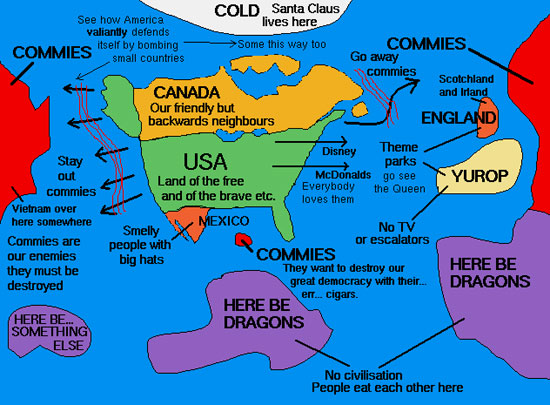Professor Danny Dorling, in his keynote speech, used a number of maps from a project by Ben Hennig which totally engaged a room of Geography teachers - audible 'wow's could be heard in the lecture theatre. Have a look at the website link below and I guarantee that you will get lost in it for hours. Danny was also keen to express that we should use maps carefully as data can be easily distorted to show particular viewpoints. This is particularly true in the case of the upcoming election where the BBC have used several different maps to show the influence of the different parties. This made me think that planning a one off lesson on the Geography of the Election might be a project for the next few weeks. A very inspiring lecture on something that could have been dry because of the images used.
http://www.viewsoftheworld.net/
"He who no longer pause and wonder and stand rapt in awe, is as good as dead; his eyes are closed." Albert Einstein.
This was a quote given at the start of the GA Secondary Phase Committee's workshop on awe and wonder in Geography. We were encouraged to think of those 'wow' moments that students have experienced in our lessons and perhaps to create a diary of them in the future. These are the important moments in our lessons when the students are totally engaged and want to find out more. I try to create this with enquiry questions each lesson as it makes my students ask questions about the lesson before they have even sat down. A recent lesson on ageing populations asked students - "Would you want to live forever?" and even the less well behaved and less engaged students started discussing with their peers.
There were also some brilliant ideas of how to create awe and wonder in your lessons. For example, aerial photographs can get students questioning and creating theories. The Earth From the Air (365 days) by Yann Arthus-Bertrand provided a range of interesting images and students were asked to describe what was happening in each. Students could also research awesome facts as a homework task and it could be turned into a competition as a Pointless game so that students are encouraged to find the most unique facts. Fieldwork ideas included: taking photos to show how a place is unique, walking along a 100m stretch and identifying all of the hazards, writing a guide for a visitor from space for a particular environment, imagining you are homeless and explaining where you would sleep and why.
"It's not worth doing something unless someone, somewhere, would much rather you weren't doing it." Terry Pratchett
David Rogers (@davidErogers) gave a clear message in his workshop that inspirational Geography has more of an impact on performance than last minute interventions. He spoke about his time as a Head of Department and how ruffling some feathers lead to improved GCSE Geography results. Thinking about how to improve learning is the most important thing to remember and all Geography should aim to be inspiring. Using apps/websites like Fotobabble (http://www.fotobabble.com/) where you take a picture and record 30 seconds of speech can inspire students. Using literature can inspire students and teachers are never "off duty" from finding new ideas to use in lessons. One book that I am keen to put into lessons about the Arctic is Michelle Paver's 'Dark Matter' - a ghost story about Arctic exploration with some brilliant descriptions. Above all else, we should aim to make our lessons engaging so that the students want to learn and improve.
We should learn about student's personal geographies before teaching them Geography.
Margaret Robert's lecture was all about connecting with the students so that they find Geography more relevant to them. She argued that we should start with questioning students about their personal geographies so that we can understand their world and how they approach our subject.
"We make sense of the world not with empty minds but with assumptions about how things are and how things work" (GTE, 2013). Margaret used this quote to explain how constructivism is a powerful theory and that students are not 'empty buckets' when they arrive in our classrooms. Too often, we ignore this to create perfectly timed and planned lessons. It made me think that instead of starting Year 8 lessons next week with maps of the world that I should instead use an idea that Margaret used with her PGCE Sheffield students. Ask the students what they know about their local area, the UK and the world - getting them to map their ideas about the world. Almost like those maps created to show the US perspective of the world which clearly show misconceptions.
Other practical ideas about how to connect with students included intelligent guesswork. Students are asked to choose the countries with the lowest and highest life expectancies and then questioned why using socratic questioning. This allows teachers to deal with common misconceptions and challenge what students already know. Similarly, a range of pictures could be shown and students asked to decide where in the world they were taken. Tricking them with pictures from the same place - which I have done before to show that Africa is not the poor place that they assume - helps to challenge misconceptions even further.
I thoroughly enjoyed my day at the GA Conference because I am now full of ideas and excited to start working on my making my lessons more inspirational and involving the students more. Something that becomes difficult to remember when exam revision starts to crank up this term and reports are looming ahead. Inspiring lessons will create inspired kids. And inspired kids will want to do well. Simple really.

